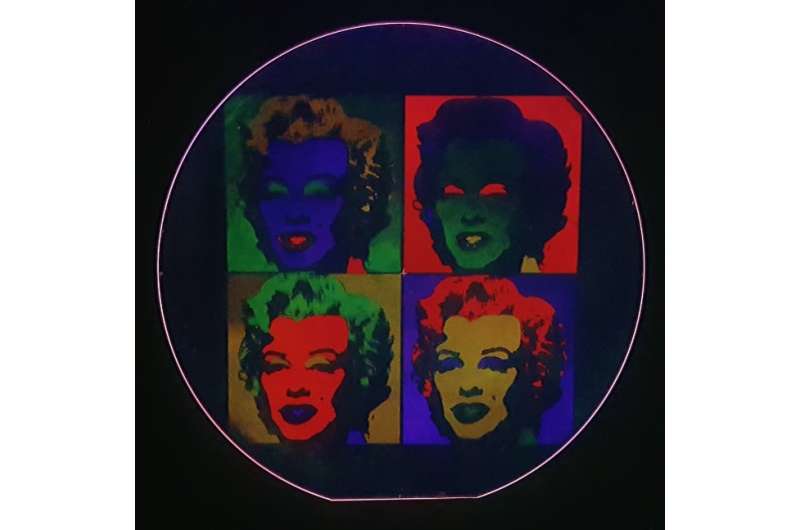November 2, 2016 feature
Scientists overcome bottleneck in fabricating quantum dot displays

(Phys.org)—Although quantum dots were discovered in the 1980s, so far there have been no widespread commercial applications of these nano-sized light-emitting semiconductor particles. The main problem is that quantum dots need to be deposited and patterned onto substrates, and currently there is no method that can do this both with a high resolution and on a large scale.
Now in a new study, researchers have developed a method that overcomes this tradeoff by combining two conventional methods: photolithography, which uses light to pattern the quantum dots with a high resolution; and layer-by-layer assembly, which uses the electric charges of the quantum dots to uniformly deposit them in layers over a large area.
The researchers, Joon-Suh Park et al., have published a paper on the new quantum dot patterning process in a recent issue of Nano Letters. They expect that the new method will provide a practical, low-cost solution to the bottleneck in fabricating high-resolution, large-scale quantum dot devices.
"We believe that our work provides a quantum dot patterning method that is compatible with conventional semiconductor fabrication processes that lowers the barrier for the industrial development," Park, at the Korea Institute of Science and Technology (KIST), told Phys.org. "As quantum dots are more robust against water or oxygen exposure compared to organic materials, we believe that quantum dots can be applied to broad aspects in which organic materials are currently in place: displays (AMOLEDs), photodetectors, phototransistors, and solar cells."
Although there are a variety of techniques for depositing and patterning particles onto substrates, quantum dots present a greater challenge due to their unusual properties. For instance, because of their high molecular weight, evaporation techniques are infeasible, and due to their hydrophobic coating, they have a tendency to dissolve when they come in contact with the organic chemicals used in conventional photolithography.
In order to use photolithography without damaging the quantum dots, the researchers in the new study used quantum dots that are modified to be hydrophilic so that they no longer dissolve in organic solvents. In addition, the researchers endowed the substrate with electric charges, which they used to help adhere the dots to the substrate via the electrostatic force.
To demonstrate the new method, the researchers fabricated a display of the screenprint "Marilyn Monroe 1967" by Andy Warhol using red, green, violet, and yellow quantum dots on a 4-inch substrate, which may be considered large-scale for quantum dot displays.
In the future, the researchers plan to further improve the quantum dot displays using the new patterning method.
"We are currently optimizing the QD-LED structure for our method, minimizing the LED size for higher power efficiency and higher resolution display technology, and developing one-chip, multi-wavelength photodetectors using the demonstrated patterning method," Park said.
More information: Joon-Suh Park et al. "Alternative Patterning Process for Realization of Large-Area, Full-Color, Active Quantum Dot Display." Nano Letters. DOI: 10.1021/acs.nanolett.6b03007
Journal information: Nano Letters
© 2016 Phys.org





















